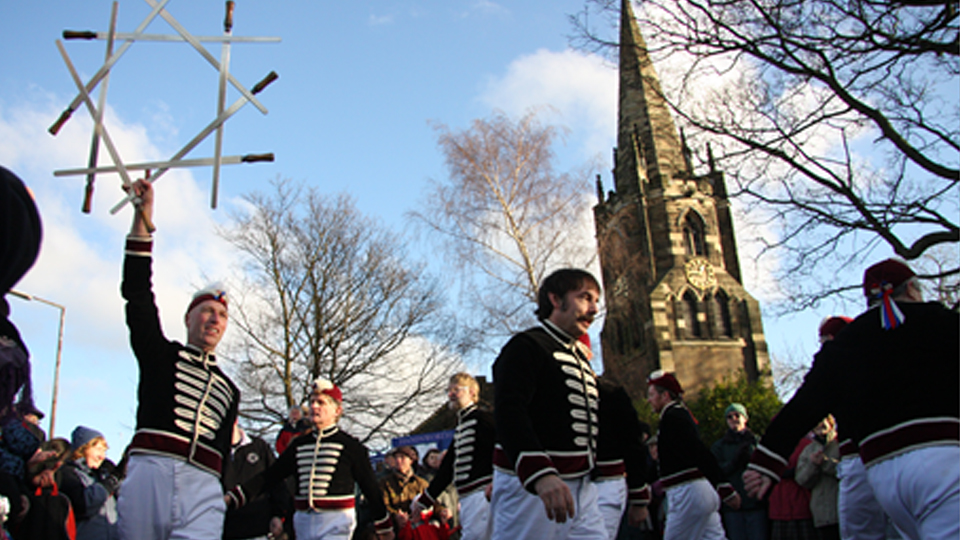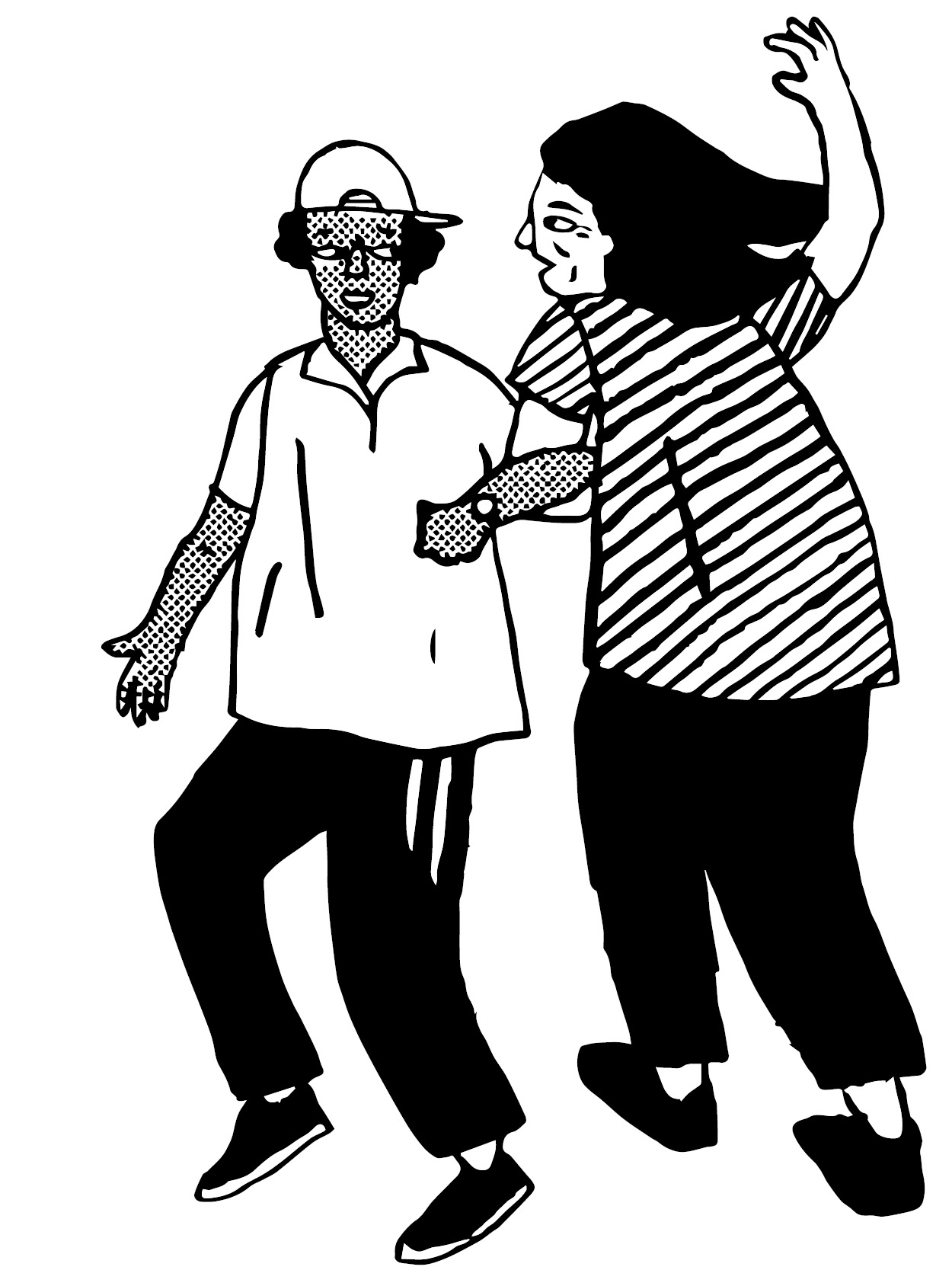Longsword
Longsword
Where
Longsword and rapper (section 10) are two types of English sword dancing. The Longsword tradition is based in Yorkshire and traditional teams including Handsworth and Grenoside, both from Sheffield, still perform the old dances in their distinctive costumes.
Context
English sword dancing is not done with actual swords. The swords were probably occupational (work) tools, such as the ones used to fix fishing nets. Longswords tend to be longer than rapper swords and are rigid or inflexible – they do not bend. Several sword teams in the past had a ‘Captain’ who was dressed differently from the dancers. In some performances the Captain is “beheaded” by the other dancers. In England sword dancing dates back to the 1700s and most of these performances seem to have been linked to Plough Monday customs which were celebrated across England in January (see section 8). The dancers would accompany the plough boys that went through the village asking for money from householders. This was done when the weather was bad and there was no work to do on the farms. The Goathland Plough Stot team, as their name suggests, are still linked to this annual custom. They have two teams who dress in either pink or blue tunics. These colours date back to the 1800s and the musicians who play for both teams wear half pink and half blue tunics. It is widely believed that the colours used to represent different political parties, but now pink and blue are worn because they are traditional.
Ribbons and Rosettes
18th century references to sword costumes in England describe the dancers wearing ribbons and rosettes over a shirt. This is very similar to many other costumes worn for performances of traditional dance in the 1700s and in the first half of the 19th century. The English Folk Dance and Song Society have a pre-1920s sword dance costume worn by the Sleights Plough Stots which features colourful applique cut outs on a white costume base. The Grenoside team also have a variety of team jackets dating back to the late 19th century. These jackets are decorated with rosettes or gathered strips of fabric and they are usually red in colour. Often paisley printed fabric was used, which has a distinctive curling tear drop /leaf shape as a repeating pattern. Grenoside’s latest jackets were designed and created by a professional theatre department in 2007.
Uniforms
Military style uniforms appear to have been added in the late 19th century. The Victorians loved to dress up and perhaps it seemed appropriate for a sword dance that the dancers should be dressed as soldiers. The Handsworth team today wear a copy of the uniform first used by the team in the 1900s. The coats have bright military braid set onto a dark blue jacket, they are very smart and add to the performance of the dance. In contrast, the traditional Flamborough team wear replicas of fisherman’s occupational clothing from the 1900s, a thick knitted jumper called a gansey (similar to a Jersey), white trousers and knitted hat. This is a very distinctive costume which visually links the dance to their locality. Like the Goathland team the Flamborough team recruit dancers from their community and it is very important to them that the dance is kept alive locally.











